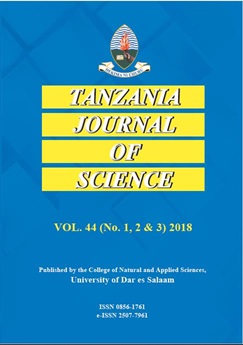Leptospira Serovars Circulating Among Human, Cattle and Goats with Associated Risk Factors in Ngara and Kibondo Districts, North-Western Tanzania
Abstract
Leptospirosis is a neglected zoonotic disease, prominent in north-western Tanzania where interactions among humans, livestock and wildlife is high. This study therefore, assessed Leptospira seroprevalence and associated risk factors by screening Leptospira serovars from blood sera of cattle, goats and humans in Ngara and Kibondo Districts using Microscopic Agglutination Test (MAT). Blood sera were positive for seven Leptospira serovars in which Sokoine, Sejroe and Grippotyhposa had higher seropositivity of ‰¥ 20.9%, whereas Leptospira serovars Kenya, Pomona, Lora, and Bataviae had seropositivity of < 10%. Variation of seropositivity and seroprevalence between Ngara and Kibondo Districts was insignificant (p = 0.0718) but varied significantly between humans, goats and cattle (p = 0.0183). Leptospira serovars Sejroe and Grippotyphosa were present in humans, goats and cattle. Sokoine, Pomona and Bataviae were co-positive in humans and goats, while serovars Kenya and Lora were co-positive in humans and cattle, indicating the possibility of dualistic transmission of Leptospira serovars in the ecosystem. Suggested risk factors associated with acquiring Leptospira bacteria were drinking contaminated water, feeding contaminated food and farming in contaminated soils. Prevalence of Leptospira in the current study alerts for health and economic risks in north-western Tanzania, which requires intensive education programs on leptospirosis transmission and avoidance.
Keywords: Leptospira; serovars; seropositivity; zoonosis; serum; Kibondo; Ngara; cattle; goat


